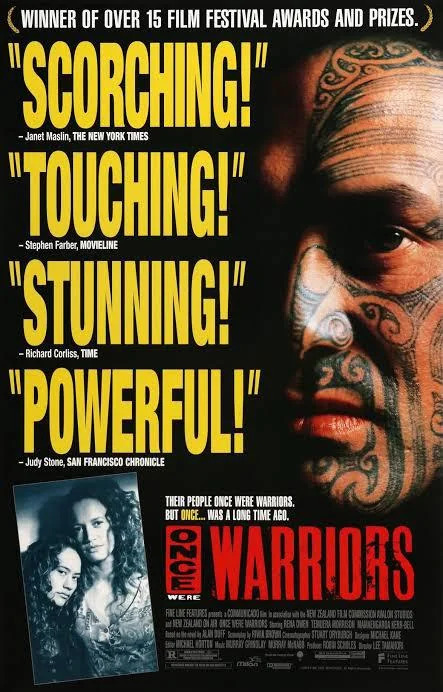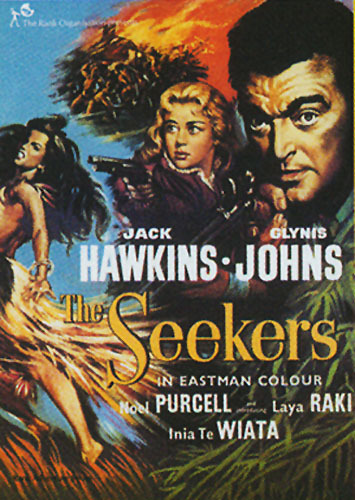Don't wanna be here? Send us removal request.
Text
🔗 Day 10 – Preparing for Hand-In 8th June
Spent today pulling everything together — blog, posters, final photo selects, and the presentation. It’s been hectic but rewarding. I added screenshots from my editing process and notes from my early brainstorming to the blog, just to show the journey. I’ve uploaded all my files to the Moodle folder and made sure the blog link is on my PowerPoint. I’m proud of how the media outputs turned out. I reckon they reflect how a lot of us feel but don’t always talk about. That’s the kind of media I want to keep making — stuff that feels honest.
0 notes
Text
💻 Day 9 – Reflecting on the Creative Process 2nd June
Looking back at where I started and where I am now, it’s wild how much the project’s evolved. At first, I was thinking too literally — like, just showing someone crying or isolated. But now I get that loneliness can be way more subtle and everyday. It’s not just sadness — it’s feeling disconnected. The whole process taught me how visual storytelling doesn’t have to be loud. A quiet photo or a simple phrase can say heaps if done right. Feeling more confident in my creative instincts after this.
0 notes
Text
📷 Day 8 – Final Photo Shoot 31st May
Went out today for one final photo shoot. I went around Hamilton city just observing — no planned shots, just capturing what stood out. I took a few of someone sitting alone in the bus stop, an empty takeaway cup on a bench, and some blurry crowd shots where you can barely see any faces. These moments felt honest. Not staged or forced, just small, quiet scenes that say a lot. Editing them in Lightroom helped bring out the mood with more shadow and cooler tones. I think this might be my strongest shoot so far.
0 notes
Text
📝 Day 7 – Reworking the Posters 28th May
I spent today reworking my posters because I wasn’t fully happy with how they were coming across. The original ones looked cool visually but didn’t feel right. They needed to be more emotional, more vulnerable. I stripped away the bold colours and swapped them for muted greys and darker tones. I also experimented with blur effects to give them a more distant, disconnected vibe. One poster just says “Are you there?” in tiny text in the corner — it’s subtle, but I think it hits harder. Sometimes less really is more.
0 notes
Text
Capturing Quiet Moments
1st May
For the photos, I went for places that feel emotionally empty – park benches, stairwells, and empty lecture rooms. I tried to shoot during overcast weather so the lighting felt soft and natural. My first few shots looked too staged though, so I asked a friend to be in some frames and just act natural, not pose. That helped a lot. I’m editing in Lightroom to boost contrast and shadows. It’s cool how much mood you can create with just small lighting tweaks.





0 notes
Text
Making Posters That Feel Real
25th April
Creating the posters was harder than I expected. My first drafts looked too busy – they didn’t match my desired emotional tone. After testing some layouts, I realised that simple, clean designs with very short text actually hit harder. I used Canva and started experimenting with greyscale filters, large empty space, and short words like “Alone,” “Still here,” and “Seen?” later, I changed to big statements like "Reflections of isolation and connection" and " The eternal quest for connection" to highlight the images on the poster.


0 notes
Text
Looking into loneliness!!
22nd April
I started by reading stats on youth loneliness in Aotearoa. One article said that nearly 1 in 3 young people in NZ feel lonely often. I also looked at the Mental Health Foundation and their info on how loneliness affects physical and mental health. I made a moodboard from Instagram posts, TikTok videos, and visual campaigns that deal with isolation. A lot of them used empty space, shadows, and muted tones. That’s the kind of style I want to experiment with in my own work.


0 notes
Text
My journey to making a presentation!
Why I Chose Loneliness 20th April
When this assignment came up, I knew I didn’t want to do something surface-level. I kept thinking about how so many people around me – including myself – feel lonely even when surrounded by others. Social media makes it worse sometimes, making people seem “connected” when they’re actually just scrolling alone. That contradiction inspired me. Loneliness is something real for my generation, and I wanted to show that visually, through media we consume every day like posters and photos.
0 notes
Text
Final Thoughts & What I’ve Learned
📅 Day 6
Looking back at my research, I’ve learned how deeply media representation affects Māori identity and public perception. But I’ve also seen how Māori creators are actively challenging outdated narratives and reclaiming storytelling spaces.
🌟 Key Takeaways: 1️⃣ Māori representation has historically been shaped by colonial perspectives, often reinforcing negative stereotypes. 2️⃣ Misrepresentation impacts real-world policies and Māori self-perception. 3️⃣ Māori filmmakers and media initiatives are leading the way in decolonizing media. 4️⃣ Social media provides new opportunities for Māori voices to be heard on a global scale.
📖 Final Reading Recommendation:
Barclay, B. (2005). Our Own Image: A Story of a Māori Filmmaker. (Victoria University)
This project has reinforced why representation matters—not just for visibility, but for empowerment and cultural identity. Māori storytelling is thriving, and I’m excited to see where it goes next.
#FinalReflections #IndigenousMedia #MāoriRepresentation

0 notes
Text
Social Media & The Future of Māori Representation
📅 Day 5
Social media has opened up new opportunities for Māori representation, allowing Indigenous creators to bypass mainstream media and tell their own stories.
📌 How Social Media Helps: ✅ Allows Māori voices to be heard globally ✅ Empowers individuals to share stories without industry gatekeepers ✅ Supports language revitalization through digital content
📱 Notable Māori Creators & Platforms
Kahu Kutia (@kahukutia) – Uses Instagram to discuss Māori identity and activism
Te Wiki o te Reo Māori (@reo.maori) – A social media campaign promoting te reo Māori
Taringa Podcast (@taringapodcast) – Explores Māori language and culture through digital media
Digital media is shifting power towards Indigenous creators, making representation more authentic and diverse. My final blog entry will reflect on what I’ve learned from this research.
#MāoriDigitalMedia #IndigenousCreativity #TeReoMāori

0 notes
Text
Māori-Led Media Projects & Their Impact
📅 Day 4
This week, I researched two major Māori-led media projects that challenge traditional representations and provide authentic storytelling.
🎬 Case Study 1: Māori Television
Established in 2004 to promote te reo Māori and Māori perspectives
Provides Indigenous-driven storytelling across various genres
Counteracts mainstream media stereotypes by showcasing diverse Māori experiences
Website: Māori Television
📺 Case Study 2: The Dead Lands (2020 TV Series)
A Māori-led production incorporating te reo Māori and Indigenous mythology
Moves beyond colonial narratives to celebrate pre-colonial Māori culture
IMDb: The Dead Lands
These case studies highlight how Māori storytellers are reclaiming media spaces. Next week, I’ll explore how technology and digital platforms are shaping the future of Māori representation.
#MāoriTV #IndigenousMedia #DecolonizingFilm

0 notes
Text
The Impact of Misrepresentation
📅 Day 3
Māori representation in media isn’t just about storytelling—it directly affects how Māori are perceived and treated in society. Research shows that negative stereotypes in media contribute to discrimination, internalized racism, and policy decisions that harm Indigenous communities.
📌 How Misrepresentation Affects Māori
Reinforces harmful stereotypes (e.g., Māori as criminals or welfare dependents)
Shapes how Māori youth view themselves and their aspirations
Influences public attitudes and government policies
📺 Case Study: Once Were Warriors (1994) While Once Were Warriors is an important film, its depiction of Māori as violent and dysfunctional reinforced existing stereotypes. Some Māori scholars argue that without balance, such portrayals can do more harm than good.
📖 Key Reading:
Smith, L. T. (2012). Decolonizing Methodologies: Research and Indigenous Peoples. (Otago University)
These readings have deepened my understanding of why authentic, Māori-led storytelling is so crucial. Next, I’ll look at how Māori media creators are taking control of their narratives.
#MāoriIdentity #MediaStereotypes #RepresentationMatters

0 notes
Text
The History of Māori Representation in Media
📅 Day 2
This week, I looked into how Māori have been represented in film and television over time. Here’s what I found:
🎥 Early Film & Stereotypes Hollywood and early New Zealand cinema often depicted Māori through colonial lenses. Films like The Seekers (1954) framed Māori as either violent warriors or passive, romanticized figures. These representations ignored the complexity of Māori culture and identity.
📺 The Rise of Māori Storytelling In the 1970s and 1980s, Māori began reclaiming their narratives. The introduction of Māori-language programming and the creation of Māori Television in 2004 were major steps forward. More recently, films like Cousins (2021) and Waru (2017) have provided Indigenous-led perspectives on Māori identity and experience.
📖 Key Reading:
Hokowhitu, B. (2003). Māori culture and the representation of Indigenous identity in media. (JSTOR)
I’m starting to see how deeply these portrayals shape public attitudes and policies affecting Māori communities. Next week, I’ll explore how Māori representation in media impacts identity and self-perception.
#MāoriFilm #DecolonizingMedia #IndigenousVoices

1 note
·
View note
Text
Why Māori Representation in Media Matters
📅 Day 1
Kia ora! This blog will document my research journey for my MEDIA220 project, which explores Māori representation in media.
Māori have long been portrayed through narrow and often harmful stereotypes—either as fierce warriors, noble savages, or criminals. These portrayals influence public perception and shape how Māori see themselves. However, there has been a shift in recent years, with Māori-led media projects pushing for authentic storytelling.
To understand this issue better, I will explore:
The history of Māori representation in film and television
The impact of misrepresentation on Māori identity and public perception
Case studies of successful Māori-led media projects
Research from scholars and media professionals
I want to unpack both the problems and the solutions—highlighting the work of Māori filmmakers and media initiatives that challenge outdated portrayals. More updates to come as I dive into the research!
#MāoriMedia #RepresentationMatters #IndigenousStorytelling

1 note
·
View note